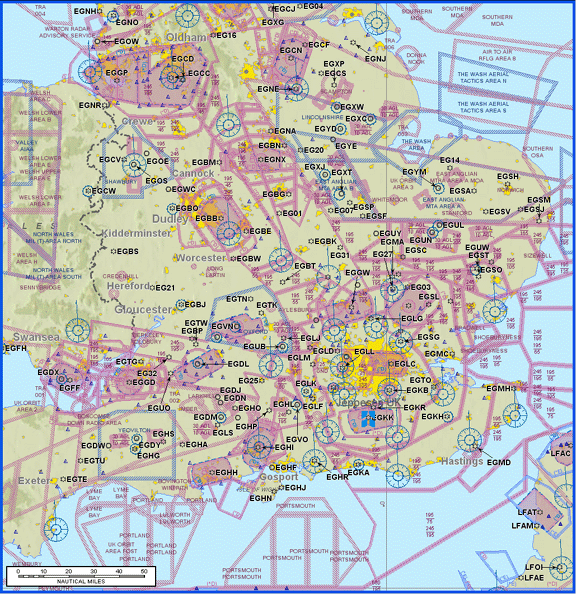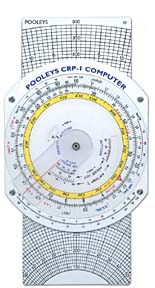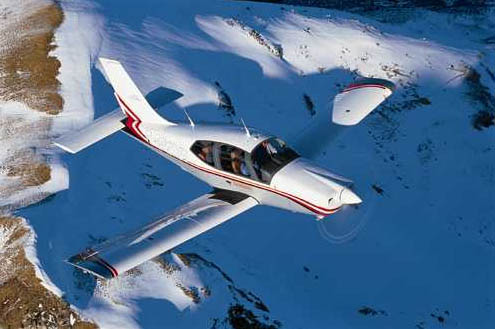
Introduction
Flying is a fantastic privilege, and learning to fly is one of life's greatest achievements.
Different people learn to fly for different reasons. Many do it just to tick the "learn to fly" box and immediately move on to different pursuits. Some get into aerobatics and have great fun drilling holes in the sky. A few end up aircraft owners, or part-owners, and these tend to keep flying much longer. A few end up doing serious touring and see the world, usually collecting additional license privileges - an Instrument Rating, for example - through much extra study and tests. Some also end up doing a lot of flying on their company's business. However, unfortunately, the great majority give up within a year or two, having spent around £10,000 getting the most basic license. Many give up because they cannot afford it - flying is not the cheapest of hobbies - but many also give up because their training was pretty basic and missed out much of the operational knowledge needed to fly from A to B.
Following a "trial lesson" for my 24th birthday (1981) I was not interested in flying, and more flights over the following years did not make a lot of difference. Finally, many years later, I got around to it properly, and did my UK/JAA PPL between 2000 and 2001. Having earned that piece of paper, at a total cost of £8600, I was amazed how little I was able to do with it. Or at least that's the way it seemed... Also, nearly all the other students disappeared almost immediately they got their PPLs. One or two went on to the "professional pilot" schools to embark on an airline pilot career, but most just gave up. I could not help wondering if something could be done to reduce this attrition rate.
My reason for learning to fly, from Day 1, was to go places - specifically to see Europe from the air, and to travel to places which are difficult to get to conventionally. Flying around the UK is fine, and it is as far as the majority of private pilots get, but the UK is a relatively small place and certainly most places in southern England can be driven to within a few hours, so the utility value of flying is usually small. European mainland holds the real attraction, with France being under an hour away - completely impossible to do using conventional transport. Flying on business was the other objective; again this is worth less in the UK because conventional transport is relatively quick and reliable but there are some spectacular cases where a 1hr flight equals a 6hr drive which sometimes took me over 8hrs.
However, the PPL course was a poor preparation for this type of flying. The navigation taught was based on matching surface features to the map (the "chart") and flying timed legs with a stopwatch - a ludicrously error-prone system under which a single feature mis-identification results in what is officially known as being "uncertain of position". This was OK up to shortly after WW2 but today's airspace contains many restricted areas and accurate reliable navigation is necessary. The following picture shows the airspace over a part of the UK, most of which is prohibited-entry without ATC clearance. Much of it one can fly underneath, below a specific altitude, but wondering into a good number of the areas at any altitude will bring down operations at a major airport, and result in an "interview" reportedly without tea and biscuits

In navigation, we had to learn to do wind effect calculations using another antiquated device, developed around WW1 - the circular slide rule.

This exists in many varieties, one of which is shown here

Coming to grips with this confusing device wastes many hours of student pilots' ground school time. One is also meant to use it for ordinary multiplication and division - instead of an electronic calculator - where it performs a multiply/divide function identical to the old straight slide rules. Until a few years ago, electronic calculators were banned from CAA PPL exams and the only permitted ways to multiply or divide were the slide rule, or doing it on paper.
In reality, most pilots who "go places" give up on this old navigation stuff and use GPS. I ditched the whole lot the day after I got the PPL. The traditional methods are taught because there is tremendous inertia in the system which is bogged down in highly prescriptive national and international regulation, and the flying schools do not want to be selling even more expensive products. They should really be doing more along the lines of "scenario based training" e.g. "today we are going to fly from Shoreham to Biarritz, so let's work out how we are going to do that" but this is simply not going to happen.
I think that anybody will give up on any optional activity if the hassle exceeds the return. The question is how to maximise the return while minimising the hassle. I did not give up, nor did I ever consider it, but it took me a year to acquire enough knowledge and confidence before I would venture abroad beyond the usual Sunday destinations like Le Touquet. In 2002 I sorted out a capable new aircraft - a Socata TB20

which was perfect for European touring. In that year (2003) I did a number of trips, as far as southern Spain and that cracked the real issues. The following year, 2004, I did quite a few more including my longest trip to date: Sitia in eastern Crete. That trip was essentially duplicated in 2010 but under IFR, and comparing the two is instructive.
At that point I was still limited to VFR, which works provided you carefully pick your weather and your routings. With a long range aircraft - the TB20 can go from UK to Corfu - VFR touring is not that hard because one can just sit at home until the weather is OK. A lot of VFR touring is easy because some countries' ATC is really laid back. But the need to remain outside controlled airspace, or get a transit clearance through it which ranges from trivial to impossible, has a habit of dropping a spanner in the works, often in a place with few options and where ATC only just barely meets the requirement for English proficiency, forcing a reversion to a backup route or an on-the-fly replan. And the usually most favoured long range touring option - flying comfortably above clouds and turbulence - is often blocked by controlled airspace. Only with an Instrument Rating does the controlled airspace issue go away; in fact it vanishes completely.
It was not until 2006, following 4 years of VFR touring, that I finally found the time to do the IR. This transformed the whole business of route planning, and in part solved the weather issue. More trips followed. This picture, produced by loading all Flitestar (a flight planning program) routepacks I still had on top of each other, shows some of the IFR trips I did 2004-2020
Most of the trips which were done within the UK, and most of my older VFR ones abroad, and most trips I had planned with Navbox (a VFR flight planning program, now dead), are not shown. A few of the routes (e.g. the one via Corsica) are not depicted exactly because I no longer have the details of old VFR trips. It is interesting to observe that almost the longest ever trip - the one to Sitia LGST in Crete - was done initially under VFR, and similarly for the one to Santorini LGSR. The general strategy for going to that part of the world is to do one long leg out of the UK - generally to Croatia which is the nearest place I know of to an "aviation heaven" - and from there it is all downhill. Obviously if you fly a Cessna 150 with a 300nm range then you cannot do it in just two legs, and can't fly straight across the Alps, but the principle remains the same. Other trips reports and writeups are here.
The decision to get a new aircraft, with low downtime and maintenance issues, a long range (1300nm) and high altitude (20,000ft) capability paid off in a big way in minimising the hassle factor which inevitably exists in flying. The IR complemented this by turning previously complicated foreign trips into "just" a route and weather planning IFR exercise. I say "just" because an aircraft that is practically immune to weather issues (say, a 99% despatch rate but without doing some suicidal stuff) will always cost millions. VFR thus remains a completely appropriate tool for many jobs: flying around the UK, sightseeing anywhere, and short easy flights within Europe when the weather is clear and there are no airspace issues.
Private flying is now entering a new phase. It has always been an extremely over-regulated activity; only running a private nuclear power station would involve more regulation. EASA - an EU agency capable of forcing through pan-European laws - has taken over most of the pilot and aircraft regulation and is doing some sensible stuff and some stupid stuff. Their airspace-regulator counterpart, Eurocontrol, is more difficult to understand as to intentions. VFR-only pilots, especially those who are not too adventurous, are likely to be net beneficiaries under the new EASA regulations. IFR flying is entering a phase of uncertainty which will stretch to 2016 or beyond, especially for those who rely on non-European license privileges (scheduled to end in the UK in April 2019, but brexit brings some uncertainties to that process), but I remain optimistic that a reasonable compromise will be eventually emerge. In 2015 a very accessible conversion route from an ICAO IR to the EASA IR - the CB IR route - was created and this is a very good sign of a new and less aggressive climate.
The initial motivation behind these trip reports was to show to new pilots that going places is actually pretty easy if you know how to go about it - know where to buy the charts, which charts, what route planning strategies work best, etc. I have received a huge amount of very positive feedback which shows that this is working in a way which printed magazines do not seem to achieve, and for which I am extremely grateful, and will keep writing trip reports.
It is a bit of a challenge to keep them interesting because - especially under IFR - well planned trips tend towards a standard format. I am never likely to deliver an account of some wild adventure in a microlight aircraft flying from the UK to Kathmandu, getting arrested in half the countries on the way and doing forced landings in mountain canyons, or landing with 4 inches of ice on the wings having nearly died crossing 15,000ft mountains without oxygen (which I wouldn't go public with even if it had happened!!) but whenever I go somewhere, or do something, reasonably different I will try to write it up.
I thank all those who have responded.
In 2012 myself and another pilot created a pan-European pilot forum - EuroGA. This was prompted by the increasingly offensive and basically useless material posted on the two main UK sites, and on the main French and German ones. These sites allow offensive posting for various reasons; mainly under a policy of maximising site clicks to maximise advertising revenue. EuroGA has been a huge success, with over 200,000 posts (as of March 2019) of which around 90% are informative. Today, we are donation-funded (web hosting etc is not free) and this has proved to be a successful model. It enables EuroGA to avoid carrying advertising, which would compromise its integrity.
In 2020 we created a new European Airport Database. This is a modern design which works well on mobile devices and support picture and PDF uploads.
This page last edited 23rd October 2020
All feedback and corrections appreciated.